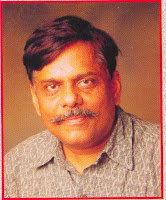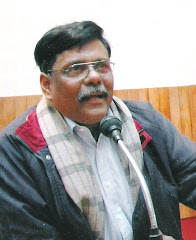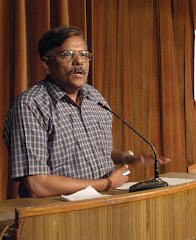Saturday, May 14, 2016
Curfew In The City- Vibhuti Narain Rai, Translated by C.M.Naim, Penguin
Special Arrangement
Curfew in the City; Vibhuti Narain Rai, trs. C.M. Naim, Penguin, Rs. 199.
There is always a certain awkwardness in critically
reviewing a work of fiction written with a sincere social and political
purpose and one which intends to inform, educate and trouble one’s
social conscience. The awkwardness increases when the political intent
is something one sympathises with and endorses and where one shares the
writer’s larger worldview. Being critical becomes even more difficult
when the writer has a felicitous pen and an ability to put forward his
message clearly, simply, and forcefully. No histrionics, no sensation
mongering, no pamphleteering and no hysteria.
Vibhuti Narain Rai’s Curfew in the City, first published as a Hindi novella in 1988 (Shahar Mein Curfew),
has just been translated in English (by C.M. Naim) and brought out by
Penguin in 2016. Vibhuti Narain Rai was a senior police officer, who had
direct personal experience of handling conflagrations and hostile
situations in several communally sensitive areas in Uttar Pradesh. The
novella is derived from this extensive experience.
In
its 94 pages, the novella presents a few intense accounts of families
caught in the middle of a curfew imposed in the aftermath of communal
riots and the impact this has on families living in the dense,
claustrophobic environments of the inner city of Allahabad. Each story
reads like a tightly paced set of moving images. The sheer intensity of
these images makes the stories poignant and powerful. There is a
Hemingwayesque quality to the spare, unadorned prose and the wealth of
graphic details of the physical surroundings in which the squalid
communal politics of mofussil India gets played out. Rarely has anyone
brought out so sharply the sordidness of living in the hell holes of our
inner cities. In fact, it is the graphic intensity of the description
of the physical surroundings that gives each story a unique dimension.
The stories themselves are relatively uncomplicated. The story of the young wife of a bidi
worker trapped by the curfew in a hole-in-the-wall tenement with 10
other members of a joint family and just one filthy toilet shared by
all, watching her infant daughter die for want of medicines and
nourishment. The relentless humiliation her old father-in-law faces when
pleading with a callous administration to obtain curfew passes to bury
his granddaughter; the sordid scheming petty mofussil politicians for
whom the communal riots they themselves engineer are a means to settle
political scores and aggrandise power; the brutality and bestiality of a
police force full of hate and prejudice for the most vulnerable; the
moral ambivalence of the civil administration unable to check the sly
games played by those who control local political power; the rape of a
young girl by hoodlums she thinks of as brothers — all these stories
unfold like a starkly terrifying reality show to which we are silent
witnesses.
It is obvious that these stories are based
on deeply felt experiences on which the writer has reflected long and
hard. What is remarkable about them, apart from their immediacy and
their frightening correspondence with reality, is that they are written
by a policeman. Rai’s ability to get under the skin of his sharply edged
cameo characters is extraordinary, almost as though he himself was
experiencing trauma and humiliation at the hands of a brutal and inhuman
police force.
The novella is said to have evoked
conflicting reactions from both sides of the communal divide in India.
The Muslims praised it as it confirmed their worst fears about the
attitudes of the vocal, politically powerful sections of the majority
community and the administration, particularly the Armed Constabulary.
The Hindu right wing lambasted it as it presented the majority community
and their political leaders in a poor light. The VHP, predictably,
sought the banning of the book and threatened to torch cinema houses if
anyone tried to make and show a film based on the book.
While
the conflicting reactions are a testimony to the power of the book,
they also underline its biggest weakness. When books are written to
convey a specific socio-political message they demand that they be
judged on the strength of the political convictions that underpin the
message and whether that message has been effectively communicated. The
literary merits of the book are subordinated to the political purpose.
Had
this been a true-life document, an account of what actually happened in
the wake of a communal riot, and had these been true stories
corroborated by documentary evidence, this would have been a
journalistic masterpiece in the manner of a Truman Capote. But this, we
know, is a work of fiction.
As a work of creative
fiction, a work must be judged on its literary merit rather than its
political message. By that standard, the book is somewhat lightweight
and thin. The characters are at best sharp cameos rather than people we
get to know, love or hate. They remain two dimensional. Nor is the book a
major social document of life and times in a North Indian city in the
80s.
These shortcomings arise primarily from the
paradoxical situation that Rai finds himself in — the desire to inform,
educate and raise awareness and the desire to create a work of art. It
is a paradox with no easy answers.
This is a brave
book and Rai deserves fulsome applause for the effort. Ultimately, it is
a good read. Not least is the quality of the translation from Hindi to
English, which is superlative. The hallmark of a great translation is
when one does not notice that the original was in another language and
not once did I feel that the book has not been written in English — so
natural and felicitous is the flow. Do read it.
Amitabha Pande is a retired IAS officer who has held policy and strategy positions for over three decades.
Curfew in the City; Vibhuti Narain Rai, trs. C.M. Naim, Penguin, Rs. 199.
Subscribe to:
Posts (Atom)


























